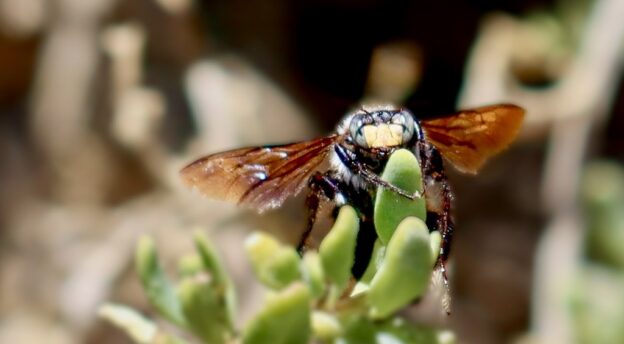Some Xylocopa have interesting adaptations, like Xylocopa io with its elongated middle legs.
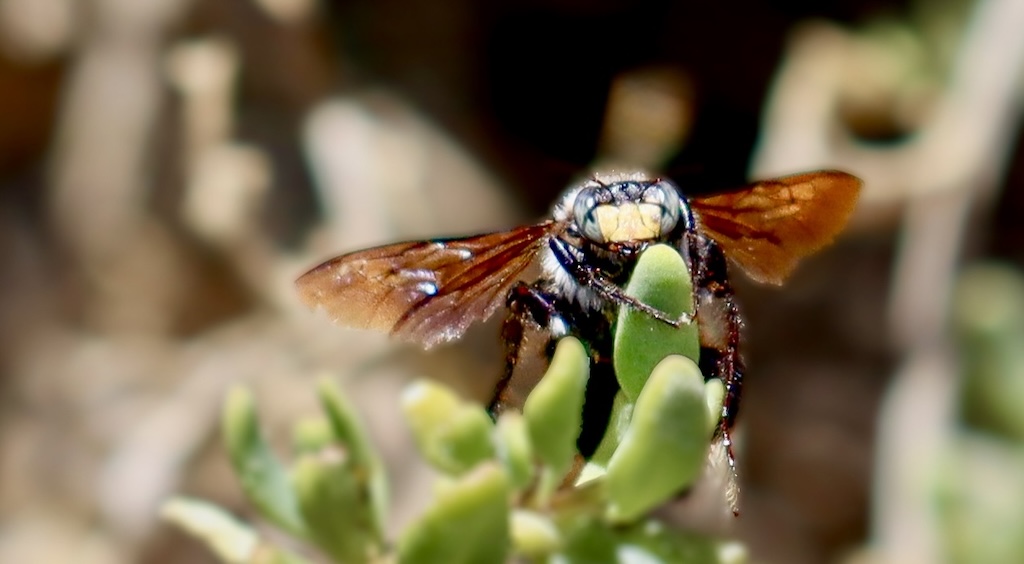
Xylocopa bees are mostly large, robust bees. They are solitary bees, unlike honeybees that live in colonies. There are many species of carpenter bees and they are important pollinators. They excavate tunnels in dead branches which are protected from rain, and construct partitions between the individual cells, each of which is provisioned with a lump of nectar and pollen mixed together, on which a single egg is laid.
Recently while out hiking we spotted a male Xylocopa io high on a ridge between Prince Albert and the Swartberg Mountains in the Karoo. Not much is known about this species, and even less is known about the female X. io., but one interesting feature of the male is his two long middle legs.
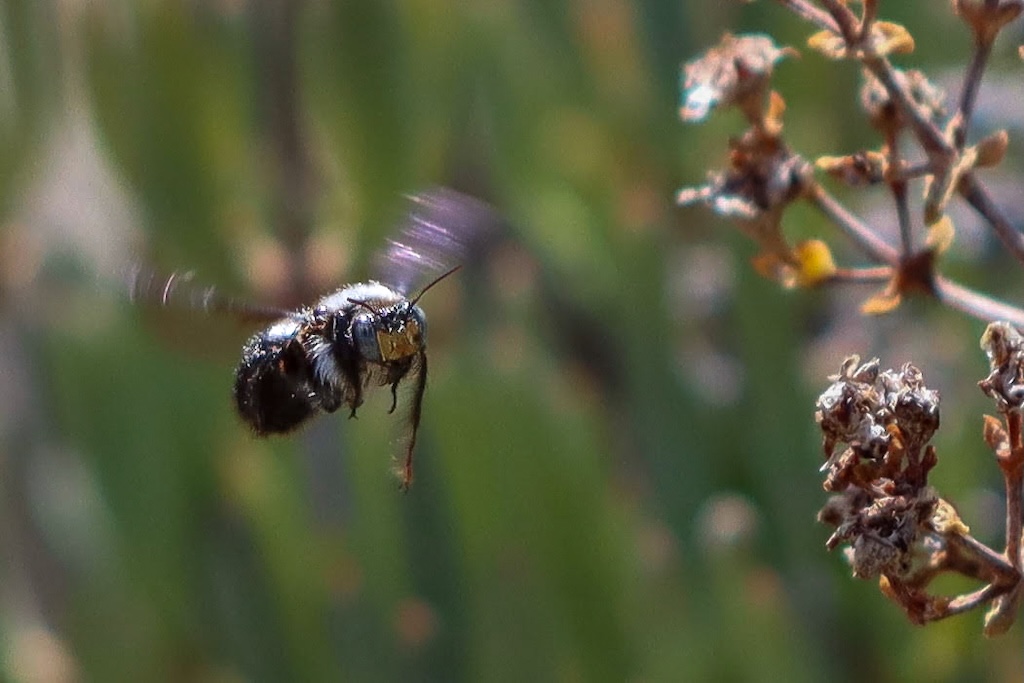
Insects are generally bilaterally symmetrical, so this male—with only one long middle leg—may have had a narrow escape from a bird, or something similar.
To attract females, Xylocopa males generally hover around a flowering shrub, then dart off, only to return seconds later to hover briefly again.
Males patrol a patch of flowers, which females visit while foraging, in order to mate with them. A patrolling male will aggressively chase away other males that intrude on his territory. The success of these encounters is enhanced by the permeation of a sex pheromone released by the male while patrolling his patch of flowers.
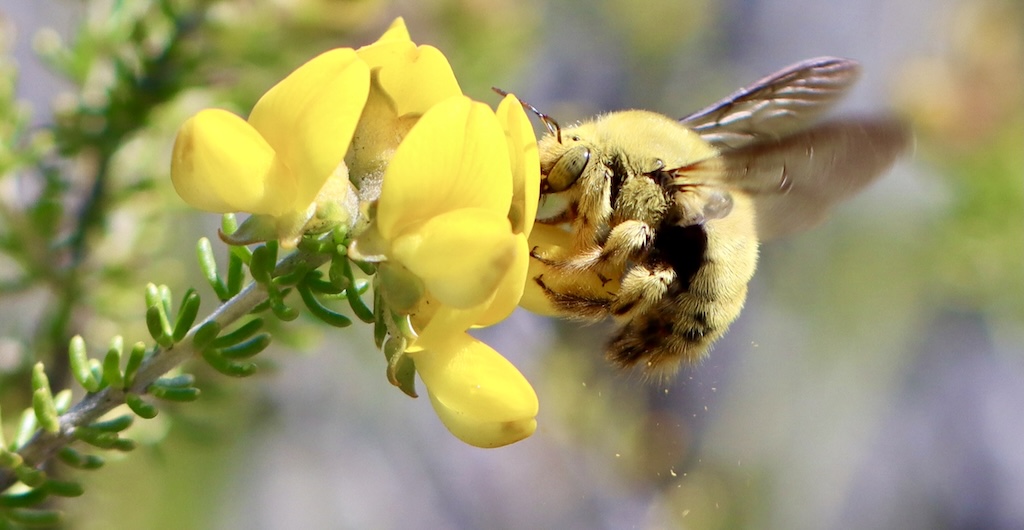
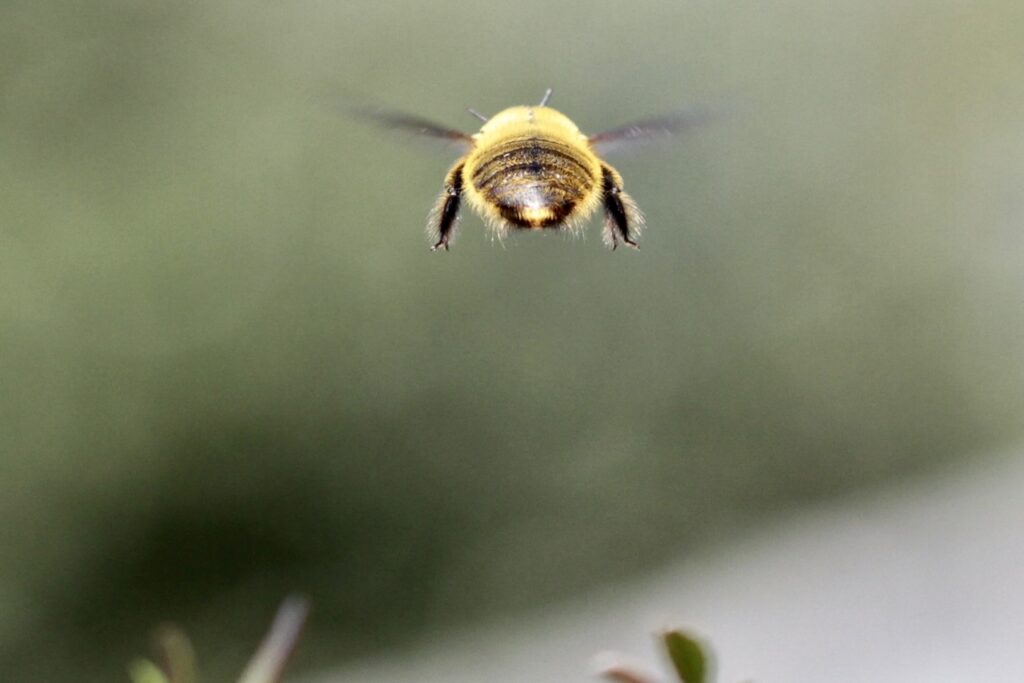
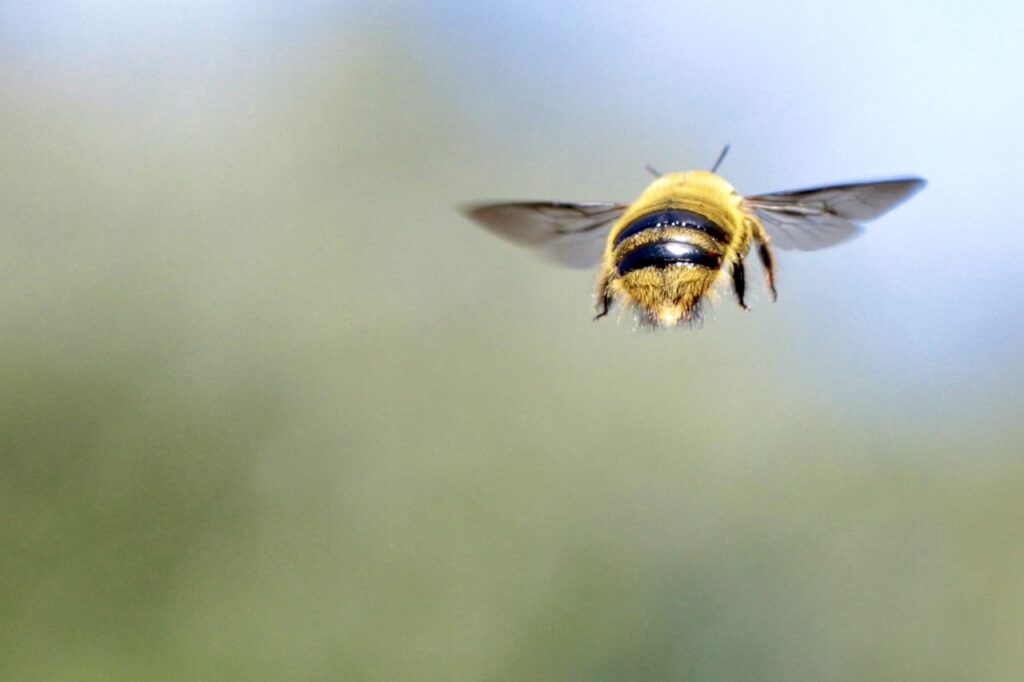
Xylocopa caffra males make quick circuits over an area of several square meters. What is most fascinating is that the normally completely yellow male, when hovering around its patch of flowers, lowers its abdomen and exposes two of its interstitial membranes which appear as two black bands on the abdomen. This behavior is most likely a way for the male to release a sex pheromone, serving both as a species-specific chemical signal and as an attractant for females. When the male momentarily darts away, the membranes are less exposed compared to when he hovers.
Males of the carpenter bee Xylocopa hirsutissima have a different strategy: they fly to the top of the mountain where they spread mandibular gland secretions over the ventral surface of their abdomen while hovering in the air awaiting the female.
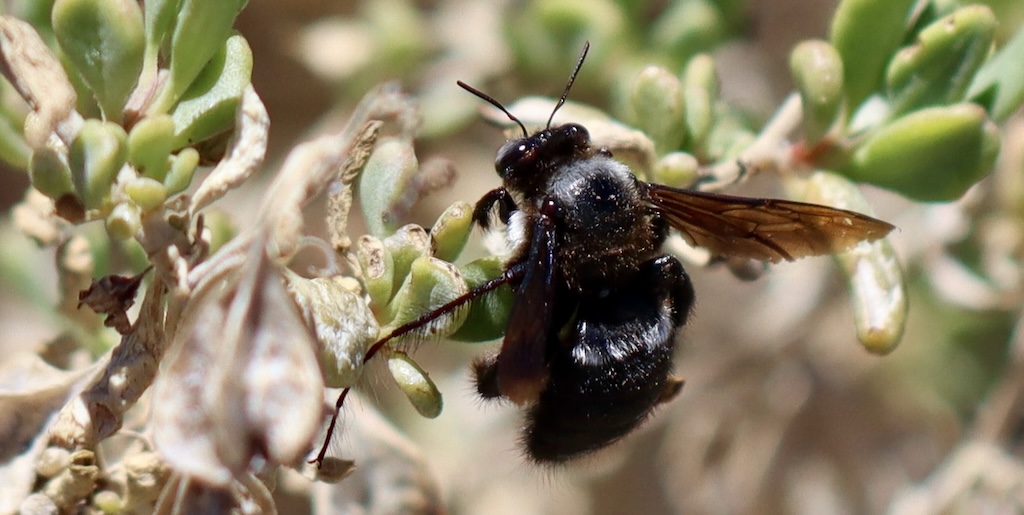
In Xylocopa io, the male’s elongated middle legs are believed to be an adaptation for mating. During mating, the male launches into the air after the female, using his extended legs to grasp her along ridges below her three small simple eyes, known as ocelli. Interestingly, another species, Xylocopa flavrufa, exhibits a similar mating behaviour: the males also pursue females in flight, using their long middle legs for mating.
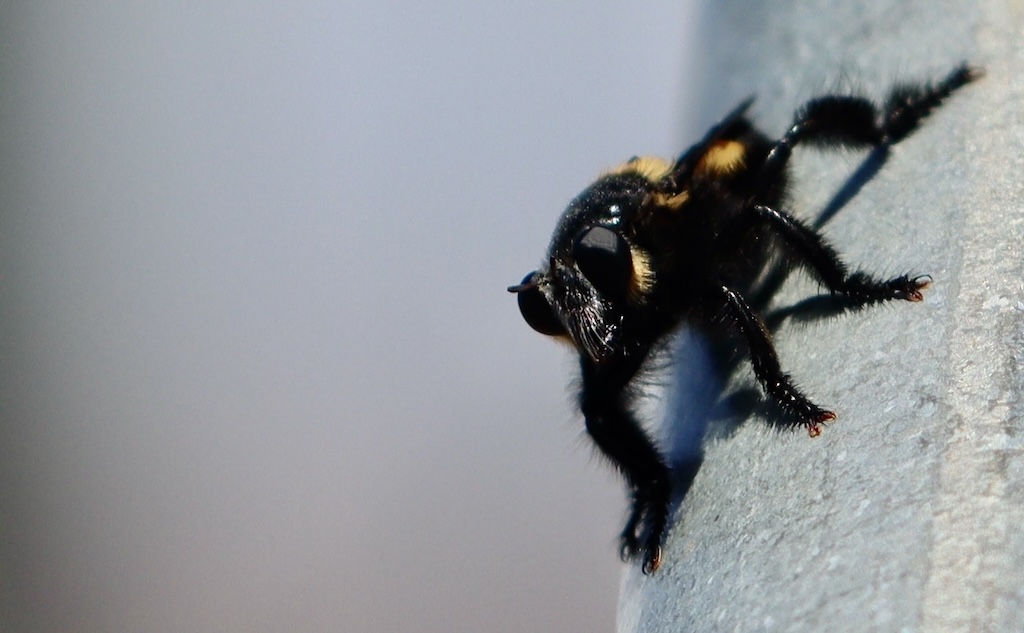
Found in the same area as X. io, was a species of fly, Hyperichia bifasciata, known to mimic specifically Xylocopa caffra. The fly’s name, bifasciata, suggests that it may have two prominent markings or bands (the “bi-” prefix means “two” and “fasciata” refers to bands or stripes). There exists much individual variation in the colours of the bands on the thorax and abdomen, from whites to yellows. Hyperechia flies are notable for their parasitic relationship with carpenter bees. The larvae are predacious on those of Xylocopa. As adults, these flies feed on bees and wasps. H. bifasciata is not too picky and so will parasitize other Xylocopa species as well.
References:
Grünberg, K. 1907. Zur Kenntnis der Asiliden-Gattung Hyperechia Schin. (Dipt.). Deutsche Entomologische Zeitschrift: 515-524
Van Bruggen, A.C. A preliminary note on the genus Hyperechia
Schiner in Africa (Diptera: Asilidae). https://journals.co.za/doi/pdf/10.10520/AJA00128789_3712
Velthuis, H.H.W. and Camargo, J.M.F. de 1975. Further observations on the function of male territories in the carpenter bee Xylocopa (Neoxylocopa) hirsutissima Maidl (Anthophoridae, Hymenoptera. Netherlands Journal of Zoology 25(4): 516-528.
Watmough, R.H. 1974. Biology and behaviour of carpenter bees in southern Africa. The Journal of the Entomological Society of Southern Africa. 37(2): 261-281.
